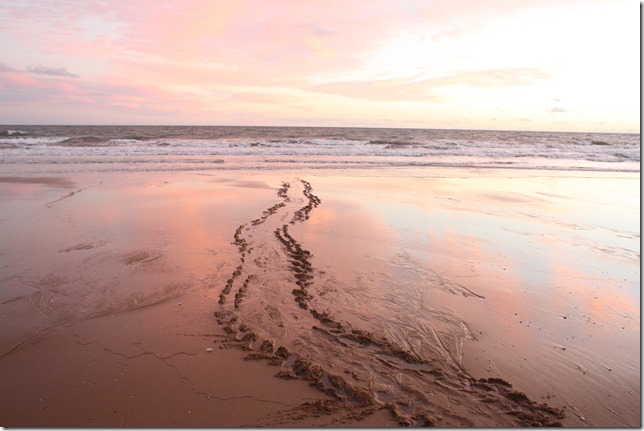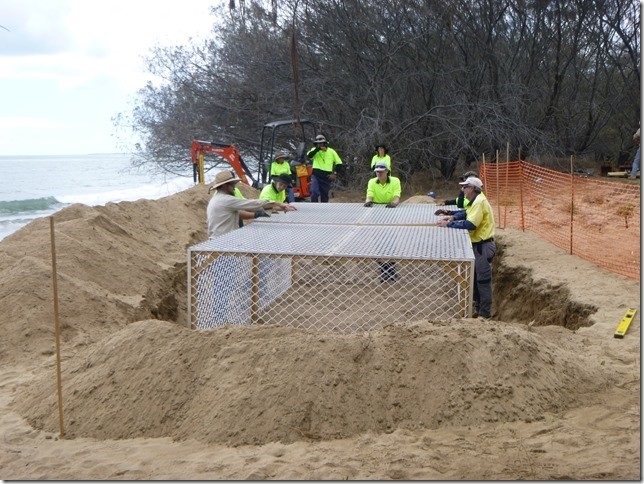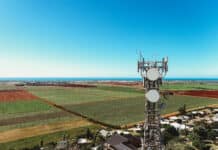
Turtle numbers are up at Moore Park Beach this season, according to coordinators Judi Giarola and Verne Cook.
“Numbers are around 20 per cent above what has been an average season here at Moore Park Beach,” Verne said.
The first turtle to lay in the 2019-20 season was a flatback on 27 October.
“We’ve had 97 total nests up until Australia Day,” Judi said.
“There were 66 loggerhead nests, 16 green nests and 15 flatback nests.
“Of those, 33 have hatched so far this season.”
The beach has had significant erosion during the nesting season, with approximately 80 per cent of nests requiring to be relocated to a safer location.

Nursery cage protects Moore Park Beach turtles
Council installed a protective nursery cage on 14 January which is now fully functional.
The cage is designed to keep out predators such as goannas, foxes, domestic dogs and protect egg clutches from interference. It is the same type of device used at Mon Repos and other local beaches.
The Moore Park Beach Turtle Monitoring Group is made up of local volunteers giving their time and energy to protect the marine turtles at Moore Park Beach.
The group was initiated in 2002 with just two or three volunteers in the first few years and is now made up of six trained and authorised volunteers and 9 in training registered volunteers, assisted by other committed locals.
The group reports directly to Dr Col Limpus at the Department of Environment and Science (DES), who, during the turtle nesting season, is based at Mon Repos.
Promoting long-term survival
The Group’s objective is to promote the long-term survival of marine turtles by”

- Morning after daily beach surveys (which extend from Moore Park Creek to 2.5km north of the northern 4WD access, ie 8.9km) with volunteers walking at first light (late October to mid – March) collecting turtle activity data and relocating “doomed” nests as required. All observations are recorded in a database with the data being forwarded to DES.
- Night patrols walk sections of the beach within the coverage area to locate nesting turtles for scientific data collection and egg relocation of “doomed” nests, if required.
- Data collection includes species ID, tag number recoveries, tagging of “new” turtles, measurements, photographs, health and general condition of the turtle.
Volunteers keep in contact with handheld UHF radios, enabling “trained resources” to be directed to required areas.
Monitoring Moore Park Beach turtles
A privately owned and Council authorised quad bike, as well as a gifted ATV (all terrain vehicle) from Burnett Mary Region Group, are used as required for relocating post 21-day nests, transporting materials such as protective aluminium mesh and trips to the Kolan River to record activity north of the daily coverage area.
The monitoring group works to ensure all members can identify the turtle species from the tracks left on the beach, determine a successful nesting versus a “no lay” (false crawl) and accurately record and communicate relevant data
They also monitor for predation and potential predation, and put in place protective mesh if required, identify relocation sites which will not have a detrimental effect on clutch incubation nor impede or disorientate hatchlings making their way to the water.
The group also actively promote awareness within the community and new volunteers are always welcome. To find out more contact Judi and Verne at judiverne@westnet.com.au.
- Other news: Recycled fencing a win for turtles and environment







